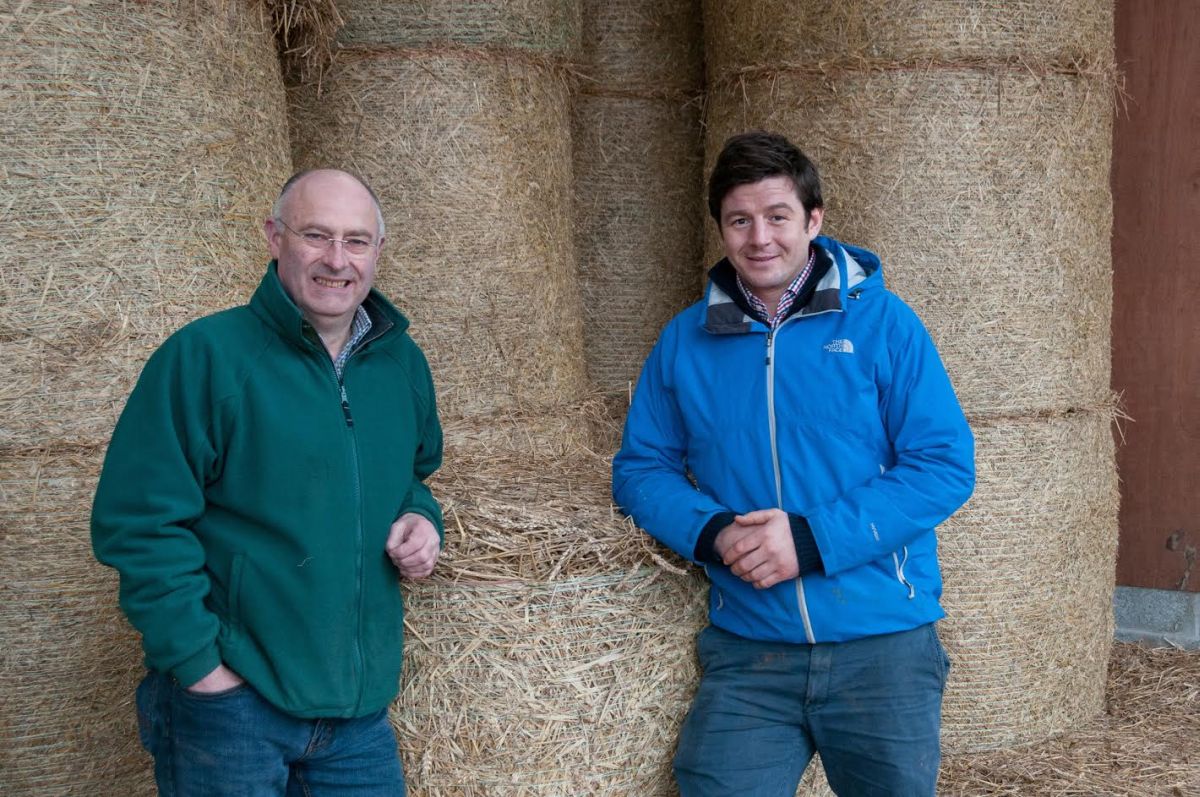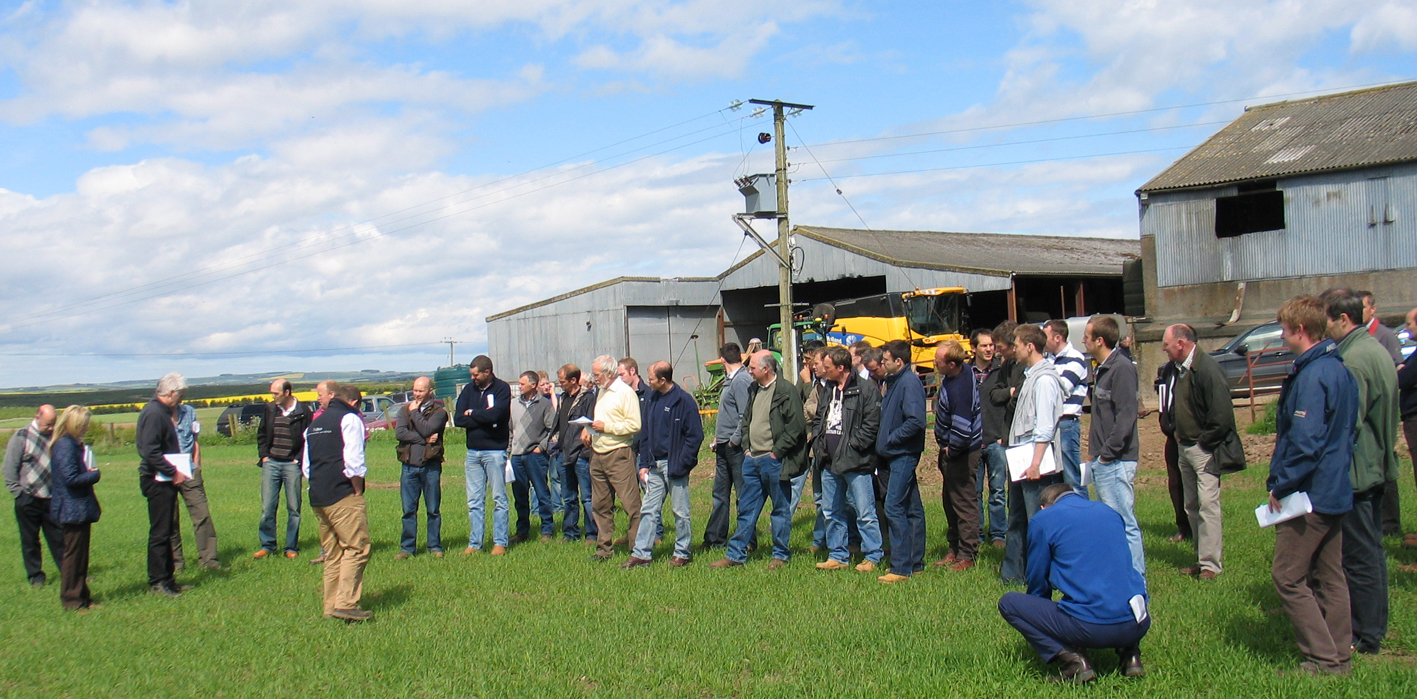
Two neighbouring farms which were once part of the same large estate have been selected as the new Lothians Monitor Farm.
Prestonhall Farms and Saughland Farm are the seventh of nine new monitor farms being established in Scotland as part of a joint initiative by Quality Meat Scotland and AHDB Cereals & Oilseeds.
Although separate businesses, the two farms have maintained close links since the estate was divided into three 20 years ago, and are positive that their partnership will strengthen as they work together as a joint monitor farm.
Prestonhall Farms is an arable enterprise of 660 hectares growing cereals and oilseeds on a five year rotation while nearby Saughland Farm comprises of 320 hectares with 70 ha arable, 1,900 breeding sheep and 55 suckler cows where all progeny is sold finished or retained for breeding.
The project will be hosted jointly by their respective farm managers Bill Gray and Peter Eccles, both of whom see a lot of potential in collaborating more closely over the course of the project.
Their situation is unlike any of the other monitor farms, and will create the opportunity to develop the concept of collaboration further, and demonstrate the opportunities for other farmers in working together to spread costs and ensure resources are efficiently utilised.
Similar philosophies
Prestonhall Farms manager Bill Gray, says: “At the moment we do share some resources, for example contract work on land and occasionally staff, on an ad hoc basis. However, I hope that through this programme we will develop those links further and with more structure.
“I feel very comfortable going into this as a joint project as Peter and I have similar philosophies in terms of what we are trying to do, and I think the farms will benefit from both closer working and the wider monitor farm project.”
Bill has spent over twenty years working at Prestonhall Farms, moving up from Northamptonshire to take on the role of arable manager in 1994. Now farm and estate manager, he has seen the farm change significantly over the course of his tenure.

From introducing minimum till over ten years ago, developing a soil nutrition programme based on GPS soil analysis and yield mapping, to making the difficult decision in 2010 to sell the 40-strong suckler herd and focus solely on arable.
Currently the farm devotes approximately 120 ha to spring barley, with 160 ha winter wheat, 70 ha winter barley, 70 ha oilseed rape and 60 ha oats, along with over 100 ha permanent pasture and 78 ha of woodland.
Always open to new ideas Bill is looking forward to reviewing the farm enterprises once more with fresh eyes, searching for new approaches to crop management, organic matter content and storage and drying facilities for the farm’s grain.
'Challenge yourself'
Bill says the monitor farm programme gives farmers a chance to challenge themselves, to get out of comfort zones.
He said: “I’m looking forward to getting a better handle on how we are currently performing, listening to the ideas of others in the community and making changes to ensure a robust and sustainable business for the future. I believe that this is imperative given the challenges that we face given the current uncertainty.”
Farm manager of neighbouring Saughland Farm, Peter Eccles, is of the same mind: “I applied to become a monitor farmer because I wanted to ensure Saughland is moving in the right direction in creating a financially and environmentally sustainable business for the future.
“I am focused on analysing our performance to make better informed decisions. Working with Bill will allow us to develop our current collaboration into something more structured, drawing on each other’s expertise and sharing resources efficiently.”
Peter joined Saughland Farm three years ago, having previously worked with SAC Consulting as an agricultural consultant.
Doubled sheep numbers
In just a short time Peter has more than doubled the sheep numbers (from 950 to over 1900) as he is works to increase farm revenue without increasing fixed costs.
The flock has slowly moved from indoor to outdoor lambing and he has been replacing the original Scotch Mule Texel crosses with Romney Aberfield crosses because of the latter’s ability to do more from grass and with less intervention at lambing time. The farm also has 55 suckler cows, mainly Angus, Hereford, and Limousin crosses, which complement the sheep enterprise and are integral to the grazing system.
Peter hopes the monitor farm programme will help him develop a number of areas on farm. For example; making better use of EID, increase kilos of liveweight produced per hectare and improved marketing of their grass-finished produce. The outdoor lambs are also not without their challenges.
“Next year is the first year all the ewes will lamb outside,” Peter explains, “and while moving to outdoor has saved us £13 per lamb, we do have to think about how to safeguard our system as we scale it up. We don’t have the use of sheds so wintering a large flock is a challenge. It is questions such as these I hope the monitor farm programme will help answer.”
The new three-year monitor farm programme is being run jointly by Quality Meat Scotland and AHDB Cereals & Oilseeds. It is establishing a group of farms to serve as monitor farms to help improve the profitability, productivity and sustainability of producers through practical demonstrations, the sharing of best practice and the discussion of up-to-date issues.
